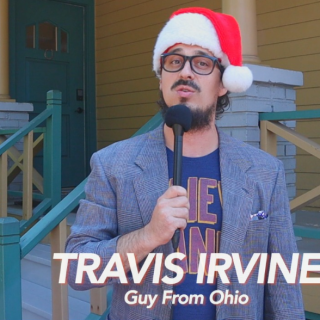Frontier life was tough in the 1850s, particularly if you were a woman. That’s the prime message of The Homesman.
Winters were harsh. Crops were uncertain. Disease was rampant. Foreplay had yet to be invented.
Directed and co-written by Tommy Lee Jones, and based on a novel by Glendon Swarthout, The Homesman takes place in pre-statehood Nebraska at the end of a particularly brutal winter. In one community, the hardships have robbed three women of their sanity. Their symptoms include hostility, withdrawal and—as depicted in the film’s most horrific scene—infanticide.
The local minister (John Lithgow) decides the solution is to transport the women to a church in Iowa where they can receive care. That leaves the question of who’s going to undertake this difficult journey across the desolate plains.
When the local men are unable to accept the task because their families need them, an unmarried farmer named Mary Bee Cuddy (Hilary Swank) volunteers. The others agree she’s as capable as any man, and they provide her with a mule-driven wagon equipped with a padlocked enclosure.
The Homesmanhas been called a feminist Western. Whether it merits that designation depends on how you interpret the adjective.
The flick certainly reveals the special challenges frontier women faced. It also gives us an admirable champion in the form of Mary, an upright woman who has learned to be resourceful and self-reliant.
However, some may feel the film’s real hero is not Mary but George Briggs, a claim jumper played by director Jones. After saving George from an attempted lynching, Mary compels him to accompany her and her human cargo across the plains with the promise that he’ll receive compensation at the end of their journey.
For much of the ordeal, the two function as near-equals. Mary has the strength of character George lacks, while he has the know-how that’s needed to deal with hostile Indians and other obstacles.
Eventually, though, Mary proves she’s not as strong as we first thought. The revelation comes in a twist that is sure to leave many viewers disappointed on a couple of levels, including the fact that it doesn’t quite ring true. From this point on, the success of their mission rests solely on George’s grizzled shoulders.
Director Jones, aided by cinematographer Rodrigo Prieto (Argo, The Wolf of Wall Street), fills The Homesman with stark landscapes and homely, authentic-sounding dialogue. Flashes of nudity and unromantic depictions of frontier coupling give it a gritty feel that separates it from traditional Westerns.
Swank is flawlessly convincing, as is most of the cast. In his first appearance as George, Jones gives the scamp a comic edge that seems out of character with the rest of the film, but he soon settles into a suitably stalwart portrayal.
An unhurried pace further distinguishes the flick from the run-of-the-mill Western—and delays the moment when it takes a disappointing detour from which there is no return.
Rating: 3 stars (out of 5)
The Homesman, rated R, opens Friday (Dec. 5) at the Drexel Theatre in Bexley.



